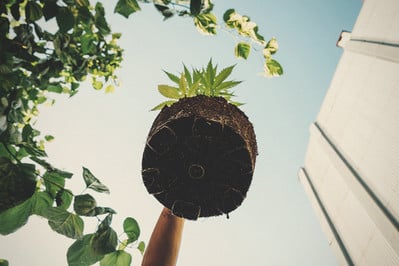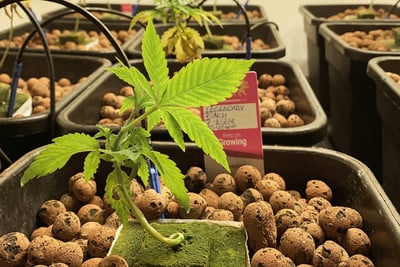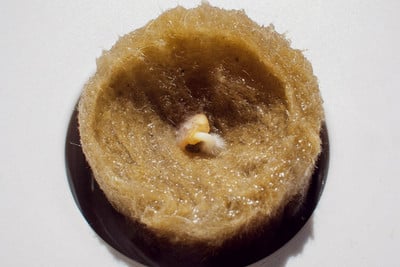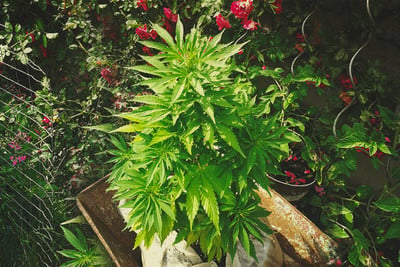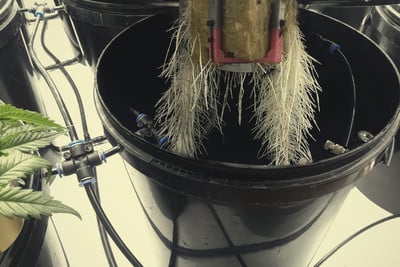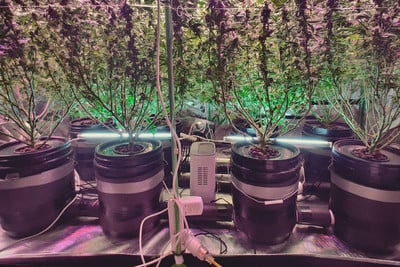.

Dissolved Oxygen: The Key to Thriving Hydroponic Weed Plants
Molecular oxygen does not hold well in water above baseline values. But with simple techniques, you can increase the amount of dissolved oxygen in your cannabis plant's water. The result is a much healthier and faster-growing crop.
Contents:
Dissolved oxygen (DO) is a term that defines the oxygen saturation level in the water. Point blank—the more oxygen in the water, the happier your plant's roots will be.
The chemical formula for water is H₂O, meaning that for each oxygen atom, there are two hydrogen atoms attached. This bundle forms a water molecule. So then, you may wonder, how is it possible to have more molecules of oxygen in the water, if each water molecule can only have one oxygen atom?
Without getting into too much science, think of it as chocolate milk. You mix chocolate into milk, shake, and voila—an instantaneous and delicious treat. Milk is still milk, chocolate still chocolate, but they blend nicely. The same principle happens with water and molecular oxygen—O₂.
Moving water is healthy water; and as water flows and tumbles about in oceans, rivers, ponds, rain, and even municipal water systems, air gets shaken into the water, and molecular oxygen gets trapped inside—just like our chocolate powder in milk.
On the contrary, stagnant water often turns “bad”. It is not the water that lost its shelf life, it’s that molecular oxygen gets depleted to a point where the perfect conditions for nefarious anaerobic bacteria happen.
This is why you were told as a kid to never drink water from a pond.
But Why Do I Need Extra Oxygen In Water?
You do not need extra oxygen in water to grow healthy cannabis plants. But if you want to grow healthier, bigger, and more productive plants, you should really consider it.
Dissolved oxygen is the first line of defense against the dreaded anaerobic bacteria that cause root rot. It also promotes rapid root growth with a much higher density of fine root hairs, which are in fact the ones responsible for water intake. Water intake alone consumes a lot of plant energy in the form of oxygen.
The increased availability of oxygen atoms also enhances the uptake of nutrients. Oxygen-deprived roots have no option but to substitute with other compounds and start producing ethylene, which causes cell damage and increases the chance of systemic disease.
Even if such is not the case, oxygen-deprived roots will potentially cause a calcium deficiency. Some might become confused why adding cal-mag products does little to nothing.
So the real question is, why wouldn’t you want to add extra oxygen?
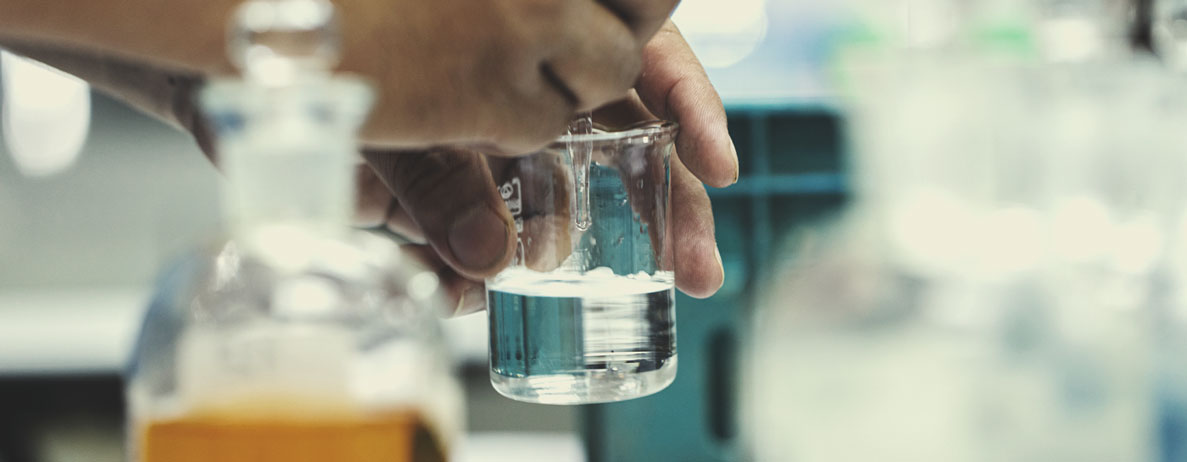
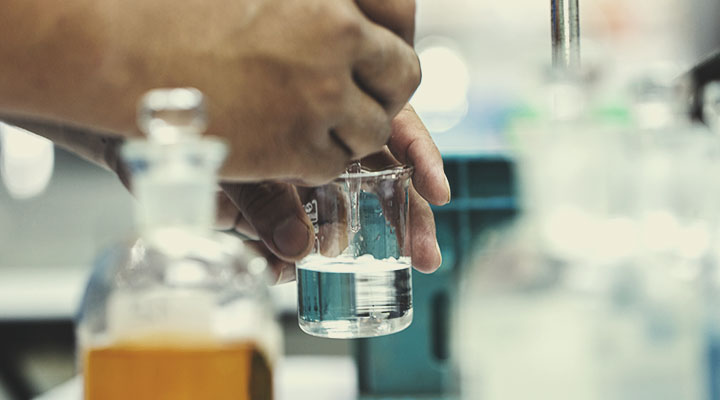
How to Add Dissolved Oxygen to Your Growing System
Horticulturalists employ dissolved oxygen to stimulate the growth of beneficial aerobic microbes, prevent the proliferation of disease-causing anaerobic microbes, and promote healthy root growth. But how exactly do they go about adding oxygen to water? There are a range of techniques available to increase the amount of dissolved oxygen in your plant’s reservoir or holding tank, from simple recirculating pumps to the addition of ozone gas. Discover a handful of the most effective methods below to learn how to oxygenate water for weed plants.
Fluming
Fluming serves as one of the easiest ways to oxygenate your water. Whereas air stones generate bubbles at the bottom of a hydroponic reservoir, fluming increases the amount of dissolved oxygen by causing a disturbance on the surface. By using a water chiller and a recirculating pump, growers can decrease the temperature of the water (which increases its oxygen-holding capacity). After water gets pumped out of the reservoir, it flows through pipes and back out into the reservoir above the surface of the water. As the pumped water breaks the surface, it allows oxygen to penetrate and enter the solution. Some growers report better results with fluming compared to using air stones, but these claims are subjective—no data exists to back up the approach when growing weed.
Harness H₂O₂
We’ve discussed H₂O, now let’s look at H₂O₂. As you’ve probably guessed by looking at this assortment of letters and numbers, this molecule features an equal amount of hydrogen and oxygen atoms—two of each. This formula represents hydrogen peroxide, a mild antiseptic often used to clean anything from minor wounds to growing equipment. The chemical also works well as a supplemental oxygen source in hydroponic systems.
The additional oxygen atom clings to the molecule with a loose bond and breaks off quite easily, causing H₂O₂ to break down. During this process, two H₂O₂ molecules part into two water molecules (H₂O) and one oxygen molecule (O₂). Adding H₂O₂ to your reservoir introduces more oxygen than water alone, but you need to use the supplement correctly.
The volatile nature of the additional oxygen atom means manufacturers add stabilisers to their formulas. These additives create a better product, but they’re not safe for human consumption or for use on plants that you’re going to smoke or ingest. Growers can access food-grade H₂O₂, but these products are very potent; a H₂O₂ concentration of 30–50% is required to forgo the use of stabilisers. To put hydrogen peroxide to use in your reservoir, you need to dilute it to 3% to avoid doing more harm than good.
You can use an easy calculation to weaken your H₂O₂ and make it compatible with your hydro setup. For example, let’s say you’re dealing with a 40-litre reservoir. You’ll need to add 1ml of 3% H₂O₂ per litre of water (40ml of 3% H₂O₂ in total), but you’re dealing with a concentration of 50%. To solve this, take the concentration you need (3%), multiply it by the volume (40ml), and divide the sum by the strength of the solution (50%). The equation looks like this:
| (3 × 40) ÷ 50 = 2.4ml 50% H₂O₂ |
Next, you need to subtract this sum from the original volume required. The figure from this equation will inform you of how much water to use to make the dilution. The equation looks like this:
| 40ml − 2.4ml = 37.6ml water |
Mix your H₂O₂ and water, and you’ve successfully diluted your H₂O₂ ready for use. You can swap out the figure in the equations above based on your reservoir size and the strength of your original hydrogen peroxide product.
Next, you need to know how to use it. Apply H₂O₂ when your hydroponic system calls for it. Perhaps you’re noticing the symptoms of anaerobic conditions (bad smells and rotten roots), or you’ve tested the dissolved oxygen content of your water and don’t like the results; levels of 5mg/l and above are recommended. Add the solution to your reservoir until you reach the desired level (measure this using a dissolved oxygen test kit). But start out small. Begin by adding half of the dose to avoid shocking your plants, and add the rest in intervals until you reach the 5mg/l mark.
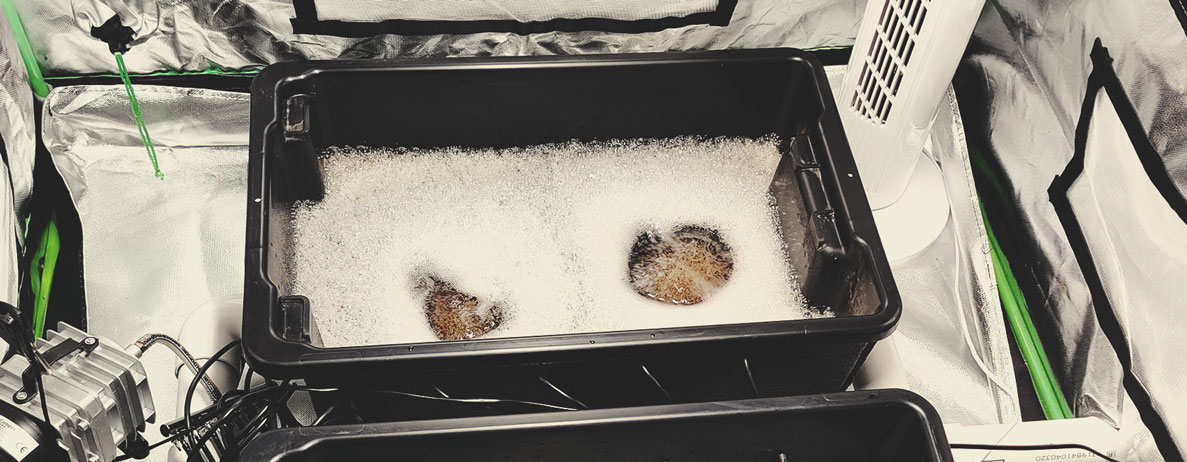
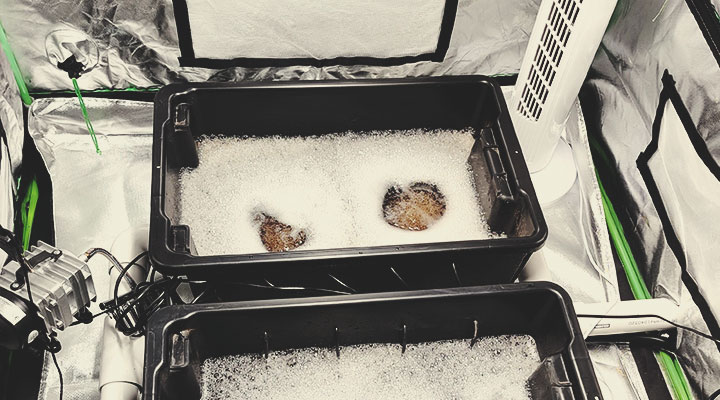
Electrolysis
Electrolysis sends electric potentials through water to produce oxygen. The process creates an electrical current between a submerged positive anode and a negative cathode to create H₂ and O₂ gases. Some of these gases form large bubbles and are released at the surface, but others form nanobubbles that remain in the solution for longer.
Electrolysis hydroponics helps to increase the dissolved oxygen content of water. However, nutrient ions present in a solution allow the process to occur, and these substances undergo reactions during electrolysis. For this reason, hydroponic cannabis growers should conduct this method using an external body of water containing salts such as sodium chloride. The oxygenated water can then be added to the reservoir to avoid disturbing the nutrient profile of the internal solution. Growers also need to use electrodes made with non-reactive metals, such as titanium, that won’t corrode.
Increasing dissolved oxygen by way of electrolysis has beneficial effects on plant growth. While no studies document the effects on cannabis, researchers have found that the technique increases the growth[1] of hydroponic water spinach plants.
Ozone
With a chemical formula of O₂, plain old oxygen diatomic gas possesses two oxygen atoms. In contrast, ozone (O₃) features three oxygen atoms. Not only that, but it’s an incredibly unstable molecule that reverts back to O₂ rapidly, meaning that the third atom ends up in its immediate environment. Ozone is also around 13 times more soluble in water than O₂ and leads to incredibly high levels of dissolved oxygen saturation in a solution.
The bottom line: ozone offers an effective method of oxygenating water for plants. Growers can purchase ozone generators and use them to oxygenate water in an external holding tank before introducing the saturated water into the main reservoir.
Keep Your Hydroponic System Clean
General cleanliness also helps to create the best oxygenated water for plants. Thoroughly cleaning your gear in between grows, and any accessible parts during cultivation, will help to minimise the growth of organisms that use up dissolved oxygen. For example, while algae produce oxygen by splitting water molecules in the presence of light, they start to consume oxygen from the environment in dark conditions. Scrubbing your gear with a 3% hydrogen peroxide solution will help to kill off competitors, and using opaque containers will reduce the light some of them need to grow. Some of the techniques above, including H₂O₂ and ozone, also have the added benefits of killing off unwanted microbes.
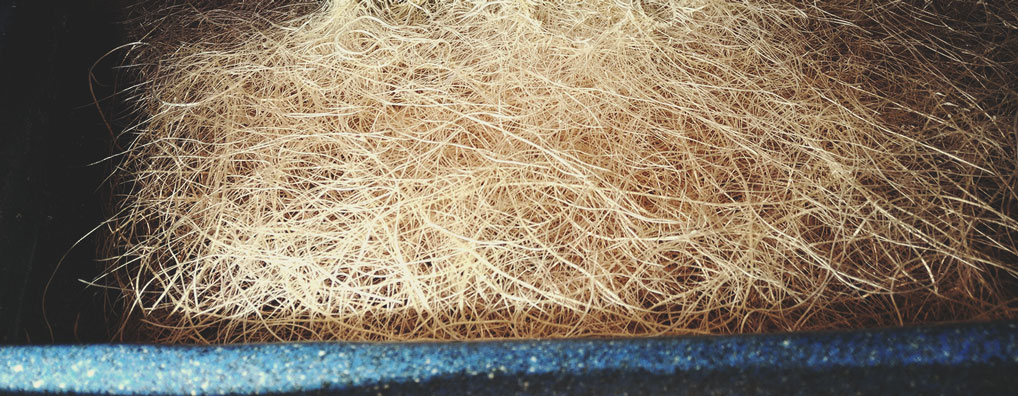
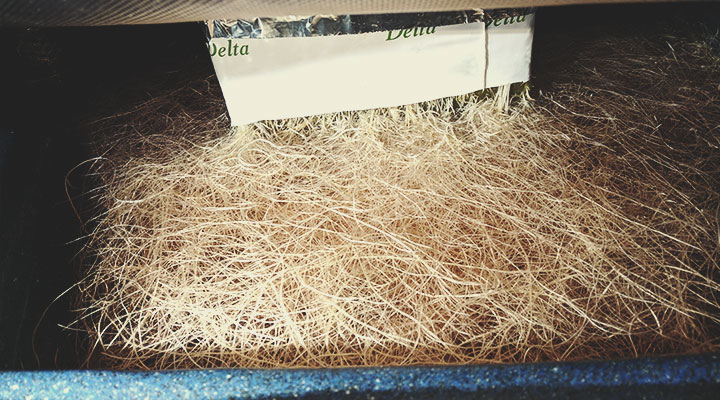
Temperature Is Key
As mentioned before, the colder the water, the better—but roots will decrease metabolic activity below 16°C, so if you are running pure hydro, beware of that. Ideally, 18°C +/- 1°C is considered to be the sweet spot. Higher than 23°C, and you start entering root-rot danger-zone.
On the other side of the spectrum, pure organic cannabis farming prohibits the use of a typical long-term automated reservoir, so what is the universal solution?
Ideally, have a reservoir without any mixed nutrients and a chiller. Add a sturdy recirculation pump to create a fluming effect and increase dissolved oxygen. When you are ready to feed you plants, mix some fresh nutrients and shower your roots with this wonderful cocktail.
They will feel refreshed and energised. As the grow room temperature eventually heats the water up and decreases molecular oxygen levels, the DO will have already done its job.
Dissolved oxygen is a little addition to your setup that can go a very long way. You fend off the bad guys, promote faster and more root hair growth, more aerobic bacteria, higher water and nutrient uptake, and an all-around happier plant.
You’re Ready to Make Oxygenated Water for Plants
Are your hydroponic cannabis plants struggling with symptoms of an anaerobic environment? Or are you simply looking to take your hydro yields to the next level? Either way, you now have several solutions at your fingertips. Techniques such as fluming are accessible and within the capability of any hydroponic grower. Adding H₂O₂ to your reservoir also doesn’t pose much of a challenge. If you’re more of a serious hobbyist that loves to experiment, why not give electrolysis or ozone a shot to ramp up the dissolved oxygen levels for your weed plants?
- Electrolysis of Water Using Iron Electrode to Boost the Growth of Hydroponic Plant of Water Spinach https://iopscience.iop.org


























